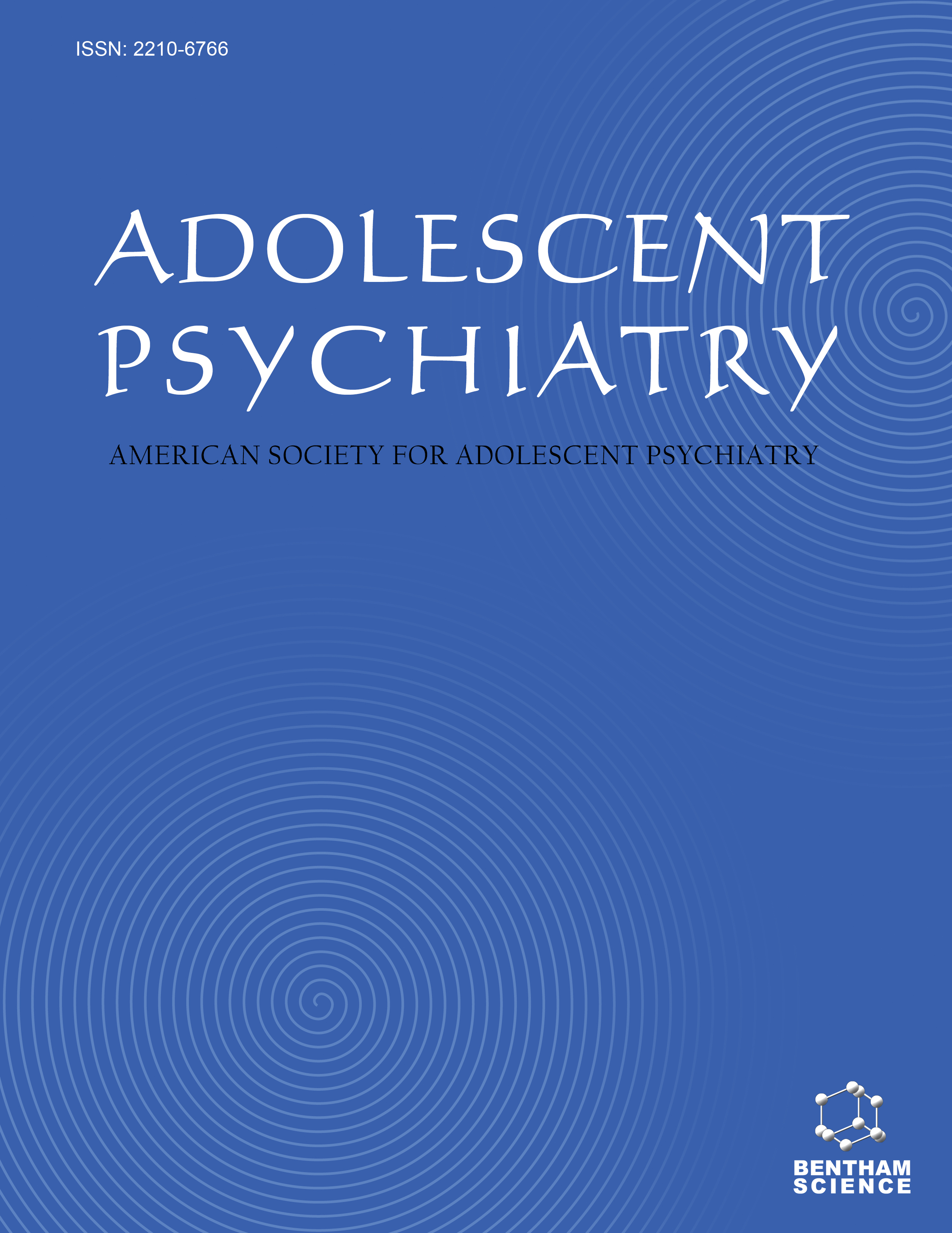- Home
- A-Z Publications
- Adolescent Psychiatry
- Previous Issues
- Volume 5, Issue 2, 2015
Adolescent Psychiatry - Volume 5, Issue 2, 2015
Volume 5, Issue 2, 2015
-
-
Supplements, Diets and Other Complementary and Alternative Interventions in Adolescent Mental Health
More LessAuthors: Bettina Bernstein and Alisa VollBackground: Complementary and alternative medicine (CAM) has become increasingly popular over the past 20 years and is used by many adolescents and their families. CAM includes a host of integrative approaches whose difference from traditional medicine center around its holistic rather than compartmentalized approach to the patient, in which evaluation of health and well-being considers the mind, body, and spiri Read More
-
-
-
Non-Pharmacological Treatments for ADHD in Youth
More LessAuthors: Anup Sharma, Patricia L. Gerbarg and Richard P. BrownBackground: Complementary and alternative medicine (CAM) in psychiatry or integrative psychiatry covers a wide range of biological, psychological and mind-body treatments that enhance standard medical practices and patient outcomes. While CAM approaches are popular among patients, health professionals have received limited education in these interventions and they are often unaware of their patients’ use of CAM tre Read More
-
-
-
The Role of Complementary and Alternative Medicine in Adolescent Substance Use Disorders
More LessAuthors: Justine Wittenauer, Michael Ascher, Alexis Briggie, Anna Kreiter and Jessica ChavezBackground: Adolescents are at elevated risk for using and experimenting with substances such as alcohol, nicotine and marijuana. Research has demonstrated not only the harmful effects of these drugs on the developing brain, but that individuals with early use have a higher risk for substance use disorders (SUD’s) later in life. Given the current prevalence of substance use among youth, resources are needed to stud Read More
-
-
-
The Effects of Mindfulness-Based Interventions on Sleep Disturbance: A Meta-Analysis
More LessAuthors: Jonathan W. Kanen, Racha Nazir, Karim Sedky and Basant K. PradhanBackground: Sleep disturbance, including insomnia, is a major health issue among both adults and adolescents. Mindfulness-based interventions (MBIs) have recently received increased attention as a non-pharmacological treatment option for patients with insomnia. Objectives: This meta-analysis assesses the effects of MBIs on sleep disturbance in the general population. Methods: A literature search was conducted using P Read More
-
-
-
Mind-Body Practices and the Adolescent Brain: Clinical Neuroimaging Studies
More LessAuthors: Anup Sharma and Andrew NewbergBackground: Mind-Body practices constitute a large and diverse group of practices that can substantially affect neurophysiology in both healthy individuals and those with various psychiatric disorders. In spite of the growing literature on the clinical and physiological effects of mind-body practices, very little is known about their impact on central nervous system (CNS) structure and function in adolescents with psychiatric Read More
-
-
-
Trauma Interventions using Mindfulness Based Extinction and Reconsolidation (TIMBER©) as Monotherapy for Chronic PTSD: A Pilot Study
More LessAuthors: Basant Pradhan, Richard Gray, Tapan Parikh, Padmalatha Akkireddi and Andres PumariegaObjective: Despite recent advancements in treatments, prognosis for PTSD is still poor and there are limited therapeutic options. Because of feasibility and acceptability issues with many existing treatment options, this challenge is even more pronounced in adolescents with PTSD. The extinction-only based treatments including prolonged exposure therapy (PE) have significant limitations in terms of tolerability and effica Read More
-
-
-
Integrative Health Services in School Health Clinics
More LessObjective: Mental health treatment today incorporates neurobiology, genetics, neuro-imaging, and pharmacologic mechanisms, offering more options to patients. For some, these modern approaches are not viable choices due to reasons such as limited access to care, cost, intolerable side effects, and, in the pediatric population, fears of potential long-term effects. With the growing prevalence of chronic health conditions, c Read More
-
Most Read This Month
Article
content/journals/aps
Journal
10
5
false
en


